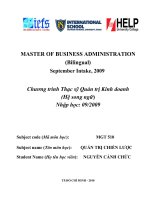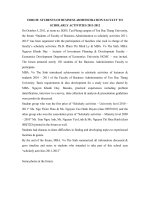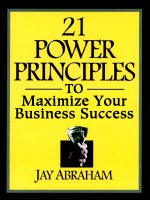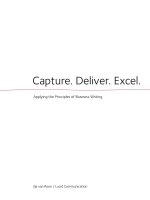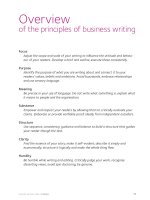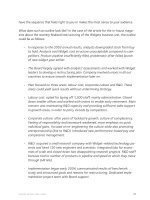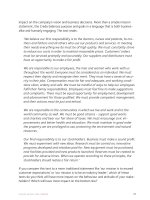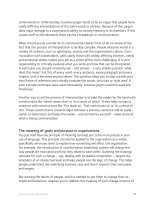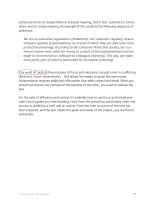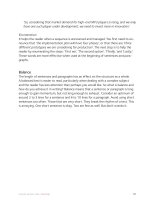principles of business taxition
Bạn đang xem bản rút gọn của tài liệu. Xem và tải ngay bản đầy đủ của tài liệu tại đây (4.82 MB, 636 trang )
Principles of Business Taxation
‘Finance Act 2006’
Thispageintentionallyleftblank
Principles of
Business Taxation
‘Finance Act 2006’
Chris Jones, BA CTA (Fellow) ATT
Amst er dam Bost on Heidelber g London New Yor k Oxf or d
Par is San Diego San Fr ancisco Singapor e Sydney Tokyo
Elsevier But t er wor t h-Heinemann
Linacr e House, J or dan Hill, Oxf or d OX2 8DP
30 Cor por at e Dr ive, Bur lingt on, MA 01803
Fir st published 2007
Copyr ight © 2007, Lexis Nexis UK. All r ight s r eser ved
The r ight s of Lexis Nexis UK t o be ident if ied as t he aut hor s of t his wor k
has been asser t ed in accor dance wit h t he Copyr ight , Designs and Pat ent s Act 1988
No par t of t his publicat ion may be r epr oduced in any mat er ial f or m (including
phot ocopying or st or ing in any medium by elect r onic means and whet her
or not t r ansient ly or incident ally t o some ot her use of t his publicat ion) wit hout
t he wr it t en per mission of t he copyr ight holder except in accor dance wit h t he pr ovisions
of t he Copyr ight , Designs and Pat ent s Act 1988 or under t he t er ms of a licence issued by
t he Copyr ight Licensing Agency Lt d, 90 Tot t enham Cour t Road, London, England
W1T 4LP. Applicat ions f or t he copyr ight holder ’s wr it t en per mission t o r epr oduce any
par t of t his publicat ion should be addr essed t o t he publisher
Per missions may be sought dir ect ly f r om Elsevier ’s Science and Technology Right s
Depar t ment in Oxf or d, UK: phone: (+44) (0) 1865 843830; f ax: (+44) (0) 1865 853333;
e-mail: per missions@elsevier .co.uk. You may also complet e your r equest on-line via
t he Elsevier homepage (www.elsevier .com), by select ing ‘Cust omer Suppor t ’ and
t hen ‘Obt aining Per missions’
British Library Cataloguing in Publication Data
A cat alogue r ecor d f or t his book is available f r om t he Br it ish Libr ar y
Library of Congress Cataloguing in Publication Data
A cat alogue r ecor d f or t his book is available f r om t he Libr ar y of Congr ess
I SBN 10: 0 7506 8457 7
I SBN 13: 978 07506 8457 6
For inf or mat ion on all Elsevier But t er wor t h-Heinemann publicat ions
visit our websit e at ht t p:/ / books.elsevier .com
Typeset by I nt egr a Sof t war e Ser vices Pvt . Lt d, Pondicher r y, I ndia
www.int egr a-india.com
Pr int ed and bound in Gr eat Br it ian
Working together to grow
libraries in developing countries
www.elsevier.com | www.bookaid.org | www.sabre.org
CONTENTS
Preface
ix
A: Introduction to the UK Tax System
1
B: Computation of Taxable Trading Profit
7
B1: Tr ading I ncome and t he Badges of Tr ade
7
B2: Adj ust ment of Pr of it
14
B3: Capit al
Revenue
23
B4: Capit al Allowances – Def init ion
30
B5: Capit al Allowances – Comput at ion
37
B6: I ndust r ial Buildings Allowances
47
B7: I nt angible Fixed Asset s
64
B8: Resear ch and Development Expendit ur e
73
B9: Tax Law and Account ing Pr act ice
84
C: Taxation of Limited Companies
91
V
C1: Comput at ion of Cor por at ion Tax
91
C2: Associat ed Companies
102
C3: Shor t Account ing Per iods
110
C4: Long Per iods of Account
116
C5: Cor por at ion Tax Self Assessment (CTSA)
125
C6: Payment of Cor por at ion Tax
141
C7: I nt er est on Lat e Paid Tax
151
C8: CTSA Penalt y Regime
156
C9: I ncome f r om Pr oper t y
161
C10: Loan Relat ionships
167
C11: Relief f or Tr ading Losses
177
C12: Relief f or Ot her Losses
187
C13: Cor por at e Capit al Gains
192
C14: Rollover Relief
201
C15: Shar es and Secur it ies: Mat ching Rules
208
C16: Subst ant ial Shar eholding Exempt ion
223
C17: The Pr inciples of Gr oup Relief
228
C18: Gr oup Capit al Gains
241
C19: Close Company Def init ion
252
vi Cont ent s
C20a: Close Company I mplicat ions – Par t 1
261
C20b: Close Company I mplicat ions – Par t 2
266
C21: I nvest ment Companies
271
C22: Cor por at e Vent ur ing Scheme
279
D: Employee Tax Matters
288
D1: Employed or Self Employed?
288
D2: I nt r oduct ion t o Employment I ncome & Benef it s
295
D3: Company Car & Fuel Benef it s
308
D4: Living Accommodat ion – Taxable Benef it s
318
D5: Loans t o Employees & Use of Asset s
325
D6: Miscellaneous Benef it s
335
D7: Expenses of Employment
343
D8: Calculat ing t he I ncome Tax Liabilit y
353
D9: I nt r oduct ion t o PAYE
360
D10: PAYE End of Year Ret ur ns
369
D11: Class 1 Nat ional I nsur ance Cont r ibut ions
376
D12: Class 1A and 1B Nat ional I nsur ance Cont r ibut ions
388
D13: Ter minat ion Payment s
396
D14a: Occupat ional Pensions and Fur bs
408
D14b: The Ent er pr ise I nvest ment Scheme
417
E: Value Added Tax
423
E1: Over view of t he VAT Syst em
423
E2: Regist r at ion
432
E3: Def init ion of Supplies
444
E4: Liabilit y of t he Supply
451
E5: Schedule 8 VATA 1994 – Zer o Rat ing
455
E6: Schedule 9 VATA 1994 – Exempt ions
463
E7: Deemed Supplies
470
E8: Value of t he Supply
481
E9: Time of Supply
489
E10a: I nput Tax: When t o Recover
496
E10b: Par t ial Exempt ion
511
E11: VAT Recor ds and Ret ur ns
527
E12: Account ing f or VAT
539
E13: Bad Debt Relief
551
E14: Cont r ol Visit s, Appeals and Assessment s
559
E15a: Misdeclar at ion Penalt y
571
Cont ent s vii
E15b: Lat e Regist r at ion Penalt y
577
E15c: Def ault Sur char ge
583
E15d: Repeat ed Misdeclar at ion Penalt y
590
E15e: Ot her Penalt ies, I nt er est and Mit igat ion
596
E16: Ref unds, Repayment Supplement and I nt er est
611
Thispageintentionallyleftblank
PREFACE
This book pr ovides all t he mat er ial you need f or t he CI MA Pr of essional Development
Cer t if icat e in Business Taxat ion. Wit hin each chapt er you will f ind some examples f or
you t o t r y, t o t est you on t he impor t ant r ules cover ed in t he chapt er .
At t he end of each chapt er , t her e is a shor t summar y which cont ains a “pocket digest ”
of t he r ules cover ed wit hin t he chapt er . These individual summar ies f or m a
compr ehensive over view of t he syllabus.
As t his manual has been wr it t en specif ically t o cover all ar eas of t he syllabus we ar e
conf ident you will f ind t his an invaluable t ool leading t o success in t he examinat ion.
Thispageintentionallyleftblank
CIMA
TAX TABLES
Income Tax rates
2006-07
%
10
22
40
£
1 - 2,150
2,151 - 33,300
Starting rate
Basic rate
Higher rate
Starting rate band
Basic rate band
Income Tax reliefs
2006-07
£
5,035
Personal allowance
2005-06
%
10
22
40
£
1 - 2,090
2,091 - 32,400
2005-06
£
4,895
Income Tax – Pension contributions
Annual
allowance
£
215,000
225,000
235,000
245,000
255,000
2006-07
2007-08
2008-09
2009-10
2010-11
Basic amount qualifying for tax relief
Lifetime
allowance
£
1,500,000
1,600,000
1,650,000
1,750,000
1,800,000
£3,600
Company cars and fuel
Company cars
Cash equivalent
15% of list price for cars emitting 140g/km
Increased by 1% per 5g/km over the 140g/km limit
Capped at 35% of list price
3% supplement on diesel cars not meeting the Euro IV emission standards
or registered after 1 January 2006 (subject to 35% cap)
Van scale charge
£500 (reduced to £350 if more than four years old at the end of the fiscal year).
There is no taxable benefit where an employee takes a van home but is not allowed any other
private use.
Fuel scale benefits
For 2006-07 (& 2005-06) the benefit is £14,400 multiplied by the percentage used in
calculating the car benefit (i.e. based on carbon dioxide emission rating).
xii
CI MA Tax Tables
Small and medium sized enterprise limits
Small
£5.6m
£2.8m
50
Medium
£22.8m
£11.4m
250
2006
30%
19%
–
–
–
£300,000
£1,500,000
2005
30%
19%
0%
£10,000
£50,000
£300,000
£1,500,000
–
19/400
11/400
11/400
(i) Turnover
(ii) Balance sheet assets
(iii) Employees
Corporation Tax
Financial year
Full rate
Small companies' rate
Starting rate
Profit limit for lower rate
Profit limit for lower rate marginal relief
Profit limit for small companies' rate
Profit limit for small companies' marginal relief
Marginal relief fraction for profits between
£10,000 and £50,000
Marginal relief fraction for profits between
£300,000 and £1,500,000
For FY 2005 there is a minimum corporation tax charge of 19% on PCTCT distributed to non
corporate shareholders. This does not apply for FY 2006.
Research and Development expenditure and transfer pricing: small and medium sixed
company limits
Medium
Small
Employees
250
50
Turnover
ε50m
ε10 million
Balance sheet assets
ε43m
ε10 million
National Insurance Contributions
Class 1 contributions
Lower earnings limit
Earnings threshold
Upper earnings limit
2006-07
Annual
Weekly
£4,368
£84
£5,035
£97
£33,540
£645
2005-06
Annual
Weekly
£4,264
£82
£4,895
£94
£32,760
£630
Employee’s contributions in 2006-07 (2005-06)
Not contracted out:
Contracted out:
11% (11%) on earnings between £97 (£94) and £645 (£630)
1% (1%) above £645 (£630) per week
9.4% (9.4%) on earnings between £97 (£94) and £645 (£630)
1% (1%) on earnings above £645 (£630) per week
1.6% rebate on earnings between £84 (£82) and £97 (£94)
Employer’s contributions in 2006-07 (2005-06)
Not contracted out:
12.8% (12.8%) on earnings in excess of £97 (£94)
Contracted out: Salary related: 9.3% (9.3%) on earnings between £97 (£94) and £645 (£630)
12.8% (12.8%) on earnings in excess of £645 (£630)
3.5% (3.5%) rebate on earnings between £84 (£82) and £97 (£94)
Contracted out: Money purchase: 11.8% (11.8%) on earnings between £97 (£94) and £645 (£630)
12.8% (12.8%) on earnings in excess of £645 (£630)
1% rebate on earnings between £84 (£82) and £97 (£94)
CI MA Tax Tables
Class 1A contributions
Class 1B contributions
Class 2 contributions
Normal rate
Small earnings exception
Class 3 contributions
Class 4 contributions
Annual lower earnings limit
Annual upper earnings limit
Percentage rate between limits
Percentage rate above upper limit
xiii
2006-07
12.8%
12.8%
2005-06
12.8%
12.8%
£2.10 pw
£4,465 pa
£7.55 pw
£2.10 pw
£4,345 pa
£7.35 pw
£5,035
£33,540
8%
1%
£4,895
£32,760
8%
1%
Capital Gains Tax
Retail Prices Index
Where Retail Price Indices are required, it should be assumed that they are as follows.
1982
1983
1984
1985
1986
1987
1988
1989
1990
1991
1992
1993
1994
1995
1996
1997
1998
1999
2000
2001
2002
2003
2004
2005
2006*
2007*
Jan
–
82.61
86.84
91.20
96.25
100.0
103.3
111.0
119.5
130.2
135.6
137.9
141.3
146.0
150.2
154.4
159.5
163.4
166.6
171.1
173.3
178.4
183.1
188.9
193.4
198.6
* = assumed
Feb
–
82.97
87.20
91.94
96.60
100.4
103.7
111.8
120.2
130.9
136.3
138.8
142.1
146.9
150.9
155.0
160.3
163.7
167.5
172.0
173.8
179.3
183.8
189.6
194.2
199.0
Mar
79.44
83.12
87.48
92.80
96.73
100.6
104.1
112.3
121.4
131.4
136.7
139.3
142.5
147.5
151.5
155.4
160.8
164.1
168.4
172.2
174.5
179.9
184.6
190.5
194.6
199.4
Apr
81.04
84.28
88.64
94.78
97.67
101.8
105.8
114.3
125.1
133.1
138.8
140.6
144.2
149.0
152.6
156.3
162.6
165.2
170.1
173.1
175.7
181.2
185.7
191.6
195.0
199.8
May
81.62
84.64
88.97
95.21
97.85
101.9
106.2
115.0
126.2
133.5
139.3
141.1
144.7
149.6
152.9
156.9
163.5
165.6
170.7
174.2
176.2
181.5
186.5
192.0
195.4
200.2
Jun
81.85
84.84
89.20
95.41
97.79
101.9
106.6
115.4
126.7
134.1
139.3
141.0
144.7
149.8
153.0
157.5
163.4
165.6
171.1
174.4
176.2
181.3
186.8
192.2
195.8
200.6
Jul
81.88
85.30
89.10
95.23
97.52
101.8
106.7
115.5
126.8
133.8
138.8
140.7
144.0
149.1
152.4
157.5
163.0
165.1
170.5
173.3
175.9
181.3
186.8
192.2
196.2
201.0
Aug
81.90
85.68
89.94
95.49
97.82
102.1
107.9
115.8
128.1
134.1
138.9
141.3
144.7
149.9
153.1
158.5
163.7
165.5
170.5
174.0
176.4
181.6
187.4
192.6
196.6
201.4
Sep
81.85
86.06
90.11
95.44
98.30
102.4
108.4
116.6
129.3
134.6
139.4
141.9
145.0
150.6
153.8
159.3
164.4
166.2
171.7
174.6
177.6
182.5
188.1
193.1
197.0
201.8
Oct
82.26
86.36
90.67
95.59
98.45
102.9
109.5
117.5
130.3
135.1
139.9
141.8
145.2
149.8
153.8
159.5
164.5
166.5
171.6
174.3
177.9
182.6
188.6
193.3
197.4
202.2
Nov
82.66
86.67
90.95
95.92
99.29
103.4
110.0
118.5
130.0
135.6
139.7
141.6
145.3
149.8
153.9
159.6
164.4
166.7
172.1
173.6
178.2
182.7
189.0
193.6
197.8
202.6
Dec
82.51
86.89
90.87
96.05
99.62
103.3
110.3
118.8
129.9
135.7
139.2
141.9
146.0
150.7
154.4
160.0
164.4
167.3
172.2
173.4
178.5
183.5
189.9
194.1
198.2
203.0
Thispageintentionallyleftblank
A: Introduction To The UK Tax System
I n t his chapt er you will cover t he f ollowing ar eas in over view:
- t he var ious t axes levied in t he UK;
- t he per iod f or which income t ax is char ged;
- t he cat egor isat ion of sour ces of income;
- t he sour ces of income t hat ar e exempt f r om income t ax.
A1.1
Taxes in the UK
The UK gover nment r aises in t he r egion of 270 t o 280 billion pounds in t axat ion
each year .
Income tax is t he single lar gest ear ner f or t he gover nment making up 30% of
t ot al r evenue. I ncome t ax is char ged on salar ies f r om employment , on r ent al
income f r om pr oper t ies let out , on int er est f r om banks and building societ ies, on
dividends f r om companies and on t he pr of it s of t he self employed.
The second lar gest ear ner f or t he gover nment is value added t ax (VAT). This
makes up about 23% of t he t ot al gover nment r evenue and is char ged by
businesses t o cust omer s on supplies of goods or ser vices in t he UK.
Nat ional I nsur ance cont r ibut ions (NIC) make up 21% of t ot al gover nment
income. Nat ional I nsur ance cont r ibut ions ar e gener ally paid by bot h employer s
and employees on ear nings f r om employment , alt hough NI C is also levied on self
employed per sons on t he pr of it s of t heir t r ade.
I ncome t ax, VAT and NI C ar e t he t hr ee most impor t ant t axes as f ar as r aising
money is concer ned, making up about 75% or so of t ot al gover nment r evenue.
A lar ge par t of t he r emainder (16%), is made up of duties, being t axes on
alcohol, pet r ol and t obacco, as well as cer t ain levies on goods coming int o t he UK.
Corporation tax makes up about 8% of t ot al gover nment r evenue, being t he t ax
paid by UK companies on t heir t axable pr of it s.
The r emaining slice consist s of t he “capital taxes” being capit al gains t ax (CGT),
inher it ance t ax (I HT), st amp dut y (SD) and st amp dut y land t ax (SDLT). Capit al
gains t ax is t he t ax levied when individuals sell asset s and make a pr of it .
2
Pr inciples of Business Taxat ion ‘Finance Act 2006’
A1.2
The tax year
I ndividuals pay income t ax by r ef er ence t o t he “t ax year ”. The UK t ax year r uns
f r om 6 April to the following 5 April. For example, t he t ax year t hat begins on
6 Apr il 2006 and ends on 5 Apr il 2006 is known as t he t ax year 2006/ 07.
The t ax r at es and t ax allowances f or t he 2006/ 07 t ax year , wer e set in t he
Mar ch 2006 Budget .
Ther e ar e t wo st ages in calculat ing an individual’s t ax liabilit y. Fir st we comput e
t he individual’s t axable income f r om all sour ces in t he r elevant t ax year . Having
ar r ived at taxable income we t hen apply t he 2006/ 07 tax rates and allowances
t o t hat income, t o ar r ive at t he tax liability f or t he year . This t ax will be
collect ed by t he HM Revenue & Cust oms (“t he Revenue”) under t he “self assessment ” syst em. This will be dealt wit h in a lat er chapt er .
A1.3
Sources of income
The t ax legislat ion cat egor ises var ious sour ces of income. Each t ype of income
has it s own special r ules. This is why we need t o decide what t ype of income an
individual has r eceived.
When we looked at income r eceived by individuals in t he past , t he types of
income wer e sor t ed int o Schedules and somet imes f ur t her divided int o Cases.
This was called t he Schedular system. I t st ill oper at es f or companies and so we
will be looking at it in det ail when we st udy companies. You may well f ind
r ef er ences t o t he old syst em in past quest ions. So we will ment ion t he main
point s of t he old syst em as we explain t he cur r ent way of sor t ing out t he t ypes
of income.
The f ir st t ype of income t hat we will t hink about is trading income. This cover s
pr of it s f r om a t r ade. So, f or inst ance, a self employed per son in business as a
t axi dr iver , or a mar ket t r ader , or a builder or plumber , would be t axed on his
trading income. This used t o be called Schedule D Case I income.
Tr ading income also cover s pr of it s f r om a pr of ession or vocat ion. For inst ance, a
self employed pr of essional such as a solicit or or bar r ist er would also have
trading income. This used t o be called Schedule D Case II income. Tr ading
income is a ver y impor t ant t ype of income and we will deal wit h it in a separ at e
module.
The second t ype of income we need t o consider is property income. This is
income f r om land and buildings, such as rental income. We need t o keep pr oper t y
income f r om UK land and buildings separ at e f r om pr oper t y income f r om non-UK
land and buildings. I ncome f r om UK land and buildings used t o be t axed under
Schedule A. I ncome f r om non-UK land and buildings used t o be t axed under
Schedule D Case V.
I nt r oduct ion t o t he UK Tax Syst em
3
Next , t her e is a ver y impor t ant t ype of income called income f r om earnings and
pensions. Earnings cover s salaries, bonuses and non-cash benefits. We will look
at t hese in det ail in lat er sessions. This t ype of income used t o be t axed under
Schedule E.
Ther e ar e var ious t ypes of savings and investment income. A ver y common one is
int er est ar ising f r om UK banks and building societies. We call t his interest
income. This t ype of income used t o be t axed under Schedule D Case III.
Anot her t ype of invest ment income is dividends received from companies. These
used t o be t axed under Schedule F. As we will see lat er , dividend income needs
t o be kept separ at e f r om ot her t ypes of invest ment income because it has
dif f er ent r at es of t ax applied t o it .
These ar e t he t wo main types of savings and invest ment income.
An individual may have income f r om outside the UK. We have alr eady seen t hat
he may have property income f r om non-UK land and buildings. He may also have
investment income f r om out side t he UK such as non-UK bank interest or nonUK dividends. All income ar ising out side t he UK is now called foreign income.
For eign invest ment income used t o be t axed under Schedule D Case V.
I t is impor t ant t o not e her e t hat income can st ill be taxable in t he UK, even if it
ar ises f r om a sour ce outside t he UK. As a gener al pr inciple, individuals who live
in t he UK and who wer e born in t he UK will pay UK income t ax on t heir worldwide
income wher ever it comes f r om. So, a UK resident will gener ally pay income t ax
on f or eign income.
Finally, t her e is income which is char geable t o income t ax which does not f all
wit hin any of t he cat egor ies t hat we have j ust looked at . This is called
miscellaneous income. I t is t he Revenue' s way of cover ing it self and making sur e
t hat t axable income doesn' t f all t hr ough t he net . Miscellaneous income used t o
be t axed under Schedule D Case VI.
A1.4
Exempt income
Ther e ar e a f ew sour ces of income which ar e specif ically exempt f r om income
t ax. I ncome f r om National Savings Certificates is exempt f r om t ax, as ar e any
winnings on Premium Bonds. Any income f r om betting, gaming or lotteries is
exempt f r om income t ax.
s. 692
I TTOI A
2005
Most social security benefits ar e also exempt f r om income t ax. The not able
except ions t o t his ar e t he st at e pension and any j ob-seeker s allowances. These
ar e t axable income.
s.660
I TEPA
2003
4
Pr inciples of Business Taxat ion ‘Finance Act 2006’
Any statutory redundancy pay r eceived on t he t er minat ion of an employment is
also exempt f r om income t ax.
s. 309
I TEPA
2003
Scholarship awards ar e exempt , as is any income f r om ISAs (individual savings
account s).
SI
1998/ 18
70
Example 1
Which of t he f ollowing sour ces of income ar e exempt f r om income t ax:
Taxable
a)
b)
c)
d)
e)
f)
I nt er est on Nat ional Savings Account
Dividend f r om a f or eign company
Child’s wages f r om a newspaper r ound
I ncome f r om Nat ional Savings Cer t if icat e
Housing benef it
St at e r et ir ement pension
Exempt
I nt r oduct ion t o t he UK Tax Syst em
5
Answer 1
Taxable
Exempt
I nt er est on Nat ional Savings Account
Dividend f r om a f or eign company
Child’s wages f r om a newspaper r ound (not e)
I ncome f r om Nat ional Savings Cer t if icat es
Housing benef it
St at e r et ir ement pension
Not e:
Wages ar e t axable as employment income. The f act t hey ar e paid t o a child is
ir r elevant . However , in most inst ances, t he child’s income will be cover ed by
Per sonal Allowances so no t ax will be due.
6
Pr inciples of Business Taxat ion ‘Finance Act 2006’
SUMMARY - INTRODUCTION TO THE UK TAX SYSTEM
The main t axes in t he UK ar e income t ax, VAT, NI C, cor por at ion t ax, capit al gains t ax
and inher it ance t ax.
I ncome t ax is paid f or a t ax year which r uns f r om 6 Apr il t o 5 Apr il.
I ncome is cat egor ised int o t he f ollowing sour ces:
Tr ading income
Pr oper t y income - UK
- non-UK
Employment income
Savings and invest ment income
- int er est income
- dividend income
For eign income
Miscellaneous income
Some income is exempt f r om income t ax such as:
I ncome f r om Nat ional Savings Cer t if icat es
Pr emium bonds winnings
I ncome f r om Bet t ing and Lot t er ies
Most social secur it y benef it s
St at ut or y r edundancy pay
I ncome f r om I SAs
B: Computation of Taxable Trading Profit
B1: TRADING INCOME AND THE BADGES OF TRADE
I n t his chapt er we will look at t r ading income including:
- t he schedule f or t axing t r ading income;
- t he def init ion of a t r ade;
- t he “badges of t r ade” ar ising f r om case law;
- land t r ansact ions;
- t he ant i-avoidance pr ovisions;
- whet her r eceipt s ar e t axable or not .
St at ut or y r ef er ences ar e t o I TTOI A 2005 unless st at ed ot her wise.
B1.1
Trading Income
The cat egor y “t r ading income” encompasses bot h income from a trade, f or
example plumbing or building and income from a profession or vocation. A
pr of ession would include account ancy or law. A vocat ion includes act ing, ballet
dancing, t heat r ical per f or ming, spor t et c.
Pr eviously, under t he old schedular syst em income f r om a t r ade was t axed under
Schedule D Case I , wher eas income f r om a pr of ession or vocat ion was t axed under
Schedule D Case I I . Ther e wer e no not able dif f er ences bet ween t he way pr of it s wer e
t axed under DI or DI I .
B1.2
The definition of trading
I ncome t ax is char ged on “t he pr of it s of a t r ade, pr of ession or vocat ion”.
A t r ade is def ined as ”ever y manuf act ur e, advent ur e or concer n in t he nat ur e of t r ade”.
A “t r ade” is def ined in t he legislat ion as a “t r ade”, which is a cir cular def init ion and does
not t ake us a gr eat deal f ur t her . Ther ef or e, t he int er pr et at ion of what is meant by t he
t er m “t r ade” has been lef t lar gely t o t he Cour t s. The Cour t s have developed a number
of t est s t o det er mine whet her somebody is t r ading. These t est s ar e known as t he
“badges of t r ade”.
B1.3
The Badges of Trade
Pr of it seeking mot ive
When a per son ent er s int o a t r ansact ion, we need t o ident if y whet her t her e is a pr of it
seeking mot ive. I t is not t he exist ence of a pr of it t hat is impor t ant , it is t he mot ive t o
ear n one. However HM Revenue and Cust oms (t he Revenue) will r eally be int er est ed in
t his issue if a pr of it has act ually been ear ned, because t hen t hey have somet hing t o t ax.
s. 5
8
Pr inciples of Business Taxat ion ‘Finance Act 2006’
A t axpayer may ar gue t hat t hey ar e t r ading in or der t o ut ilise a loss t o r educe t heir t ax
bill. The t axpayer must demonst r at e t he mot ive r at her t han t he exist ence of pr of it t o
est ablish t hat a t r ade is being car r ied on.
Fr equency and number of similar t r ansact ions
I f we do somet hing once, never t o be r epeat ed again, it is unlikely t hat we would be
t r eat ed as car r ying on a t r ade. However if we keep doing it , it is mor e likely t hat we ar e
t r ading. For inst ance, assume I sold my car which I had owned f or f our year s. I t hen
bought myself anot her car and sold t hat one t wo year s lat er . I t is unlikely t he Revenue
would consider t hat I am t r ading in car s. I f , however , I bought and sold car s ever y
mont h, it is mor e likely t hat t hey will seek t o t ax t he pr of it s as t r ading income.
The most not able case in t his ar ea is Pickf or d v Quir ke wher e a t axpayer pur chased a
mill wit h t he obj ect of using it f or t r ading pur poses. However it t ur ned out t hat t he mill
was in a much wor se st at e t han t hey had imagined and t he best t hing t he t axpayer could
do was t o st r ip all t he it ems out of it and sell t hem piecemeal. He made a consider able
pr of it doing t his, so he did it again and again and again. As a r esult of t he r epeat ed
number of t r ansact ions, it was held t hat t he pr of it s wer e t axable as t r ading income.
I f we buy somet hing, do not hing t o it t hen sell it , it is unlikely we ar e t r ading. However ,
if we bought a car , put a new engine in it , r espr ayed t he body and made it mor e
at t r act ive t o buy, it is possible we would be consider ed t o be t r ading.
Nat ur e of t he asset
We cannot pin a t r ading label ont o a single one-of f t r ansact ion simply because we cannot
j ust if y t hat t he par t icular asset was pur chased f or any ot her pur pose t han t o r esell it .
The most not able case in t his ar ea is Rut ledge v CI R.
I n t his case, a t axpayer pur chased 1 million r olls of t oilet paper in one single t r ansact ion.
He t hen sold t hem on at a pr of it in anot her single t r ansact ion. This was held t o be
t r ading (an “advent ur e” in t he nat ur e of t r ade) as t her e was no ot her j ust if iable r eason
t o pur chase such a lar ge quant it y of t oilet paper - he could not ar gue t hat t his was
simply over st ocking!
Connect ion wit h an exist ing t r ade
Taking an example of a car , let us say t hat as a t ax account ant I sell a car . I t is unlikely
t hat I would be t r ading in car s because t her e is no link bet ween selling car s and being a
t ax account ant . I f however I was a car mechanic who occasionally sold a car , t he
Revenue ar e much mor e likely t o successf ully t ax t he pr of it s on t he sale of car s along
wit h my exist ing t r ade as t her e is a dir ect link bet ween r epair ing car s and selling car s.
Ot her badges of t r ade would also need t o apply, but such a link is somet hing t hat t he
Revenue will look ver y closely at .
Tr ading I ncome and t he Badges of Tr ade
9
Financing ar r angement s
I f an asset is pur chased on a shor t t er m loan which t he t axpayer is unable t o f und
wit hout selling t he asset again, t hen t he Revenue can successf ully ar gue t hat t he asset
was pur chased specif ically wit h a view t o selling it .
This was cit ed in t he case of Wisdom v Chamber lain wher e t he comedian Nor man
Wisdom bought a mound of silver bullion on a shor t t er m loan. He could not ser vice t he
int er est payment s f r om his exist ing money, but as soon as he sold t he bullion and r epaid
t he loan he f ound he had made a subst ant ial pr of it . This pr of it was t axed as t r ading
income.
Lengt h of owner ship
I f you have owned somet hing f or a long t ime, it is much easier t o j ust if y t hat you bought
it f or it s enj oyment or f or your own pr ivat e consumpt ion. A pr of it on sale would not
t her ef or e be t r eat ed as a t r ading pr of it . I f however you have only owned it f or a shor t
per iod it is much mor e likely t hat t he Revenue could successf ully ar gue t hat it was
pur chased wit h t he aim of selling it at a pr of it .
The exist ence of a sales or ganisat ion
I n t he case of The Cape Br andy Syndicat e, a syndicat e of char t er ed account ant s
dist illed br andy. They dist illed f ar mor e t han t hey could act ually dr ink t hemselves and
sold t he sur plus. The Revenue sought t o t ax t hem as t r ading income. They ar gued t hat
t hey wer e simply selling what t hey could not physically dr ink t hemselves. However as
t hey had set up a special phone line and inf or mat ion desk and published br ochur es and
adver t s adver t ising t heir br andy, t he Revenue successf ully ar gued t hat t hey had
commenced a t r ade.
Reason f or t he acquisit ion/ sale
Finally, we will look at how t he asset was acquir ed – ie, whet her pur chased or ot her wise
acquir ed by gif t or inher it ance - and what is t he r eason f or t he sale of t he asset ? By
way of an example, consider Maud who inher it s a war dr obe f ull of f ur coat s f r om her
lat e mot her . She does not want t o wear t hem, so she put s an adver t in t he local paper t o
sell t hem. The Revenue spot t his adver t and seek t o t ax Maud f or any pr of it s ear ned.
As Maud inher it ed t he coat s it is highly unlikely t hat a t r ading label can be pinned t o
t hese t r ansact ions. However if Maud had pur chased a war dr obe f ull of f ur coat s,
adver t ised t hem and t hen sold t hem at a pr of it , it is much mor e likely t hat she would be
held t o be t r ading. Simply r ealising an inher it ance f or cash is not t he commencement of
a t r ade.
I n some cir cumst ances, t he exist ence of one single badge is enough t o show t r ading (as
in t he case of Rut ledge v CI R). However in ot her cases we need t o look at a combinat ion
of t he badges of t r ade. The t r igger t o get t he Revenue int er est ed in t he t r ansact ion in
t he f ir st place is t he exist ence of a pr of it .
10
Pr inciples of Business Taxat ion ‘Finance Act 2006’
B1.4
Land transactions
The Revenue of t en look closely at t he pur chase and sale of land and buildings, simply due
t o t he size of t he pr of it s involved. I t is in t he ar ea of land t r ansact ions t hat t he most
cases involving t he badges of t r ade have been t aken t o t he Cour t s.
One of t he impor t ant quest ions t o ask is whet her t he t axpayer is “invest ing in land” or
“dealing in land” – “dealing” is t r ading. This quest ion which was posed in t he case of
Mar son v Mor t on. Her e a t axpayer pur chased some land wit h t he int ent ion of holding on
t o it as an invest ment f or at least t wo year s. I n or der t o incr ease t he value of t he land,
t he t axpayer applied f or planning per mission. Looking at t he badges of t r ade, t his will be
r egar ded by t he Revenue as a modif icat ion t o an asset t o make it mor e saleable.
I t was held in t his case t hat because t he or iginal int ent ion was t he pur chase of an
invest ment , no t r ade was being car r ied on. I t is not what t he t axpayer says which
det er mines int ent ions, it is what t he sur r ounding evidence suppor t s.
Document ed
int ent ions made t he dif f er ence.
Anot her quest ion t hat we must ask is, is whet her our t axpayer is a r esident in t he
pr oper t y, or a developer who is r ef ur bishing a pr oper t y f or onwar d sale. I n t he case of
Kir kby v Hughes, a builder pur chased a r un-down house. He car r ied out a lot of r epair
and r ef ur bishment wor k and sold t he house at a healt hy pr of it . He t hen pur chased a
st r ip of land and built a house on it , again selling it at a subst ant ial pr of it . He t hen
pur chased a bar n and conver t ed it int o a house.
The Cour t s believed t hat he was t r ading because t hey could apply enough of t he badges
of t r ade t o him. Ther e clear ly was a pr of it seeking mot ive, he had modif ied t he asset s
he pur chased, t her e was a connect ion wit h an exist ing t r ade, and t he lengt h of
owner ship in each case was f air ly shor t . The pr of it s on t he f ir st house wer e held t o be
t axable as t r ading income along wit h all of t he ot her pr oper t ies he had bought and sold.
Looking specif ically at one of t he badges of t r ade we should also ident if y a r eason f or
t he pur chase and a r eason f or t he sale. I n t he case of Taylor v Good, a husband
pur chased a pr oper t y t o be used as a f amily home. However on seeing t he house, his
wif e r ef used t o live in it . As a r esult he had no opt ion but t o sell t he house. Despit e it
being a one-of f t r ansact ion, t he Revenue f elt t hat t he badges of t r ade applied because
t he asset was only owned f or a ver y shor t per iod of t ime. However , t her e was clear ly
anot her r eason f or t he acquisit ion and subsequent sale – t her e was a genuine int ent ion
by t he t axpayer t o live in t he house r at her t han simply t o make a quick pr of it .
Ther ef or e t he t r ansact ion was held not t o be a t r ading t r ansact ion.
B1.5
Frequency of transactions
Michael buys unpr of it able r est aur ant s, t ur ns t he businesses ar ound and sells t hem at a
pr of it . He has done t his 12 t imes. The idea came t o him when he sold his f ir st
r est aur ant which he had r un as t he owner and manager f or 10 year s.
